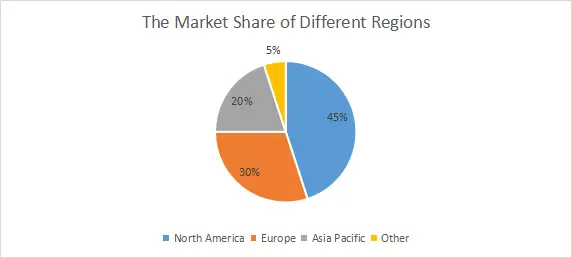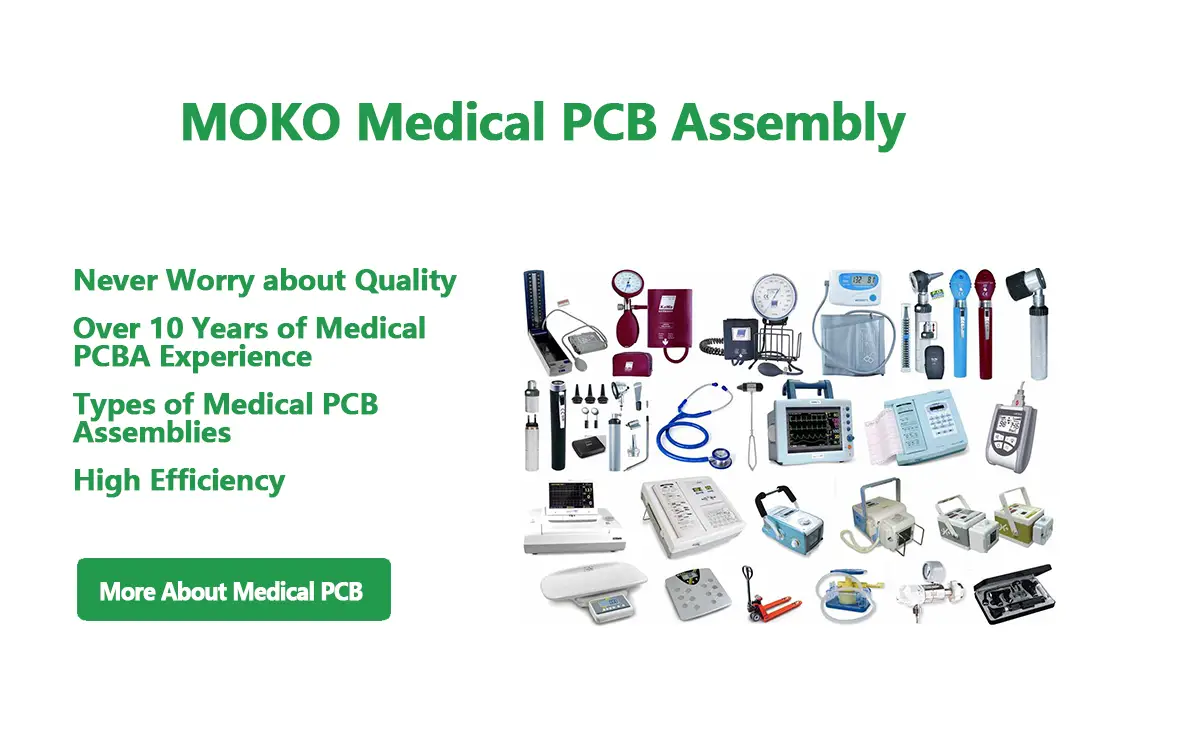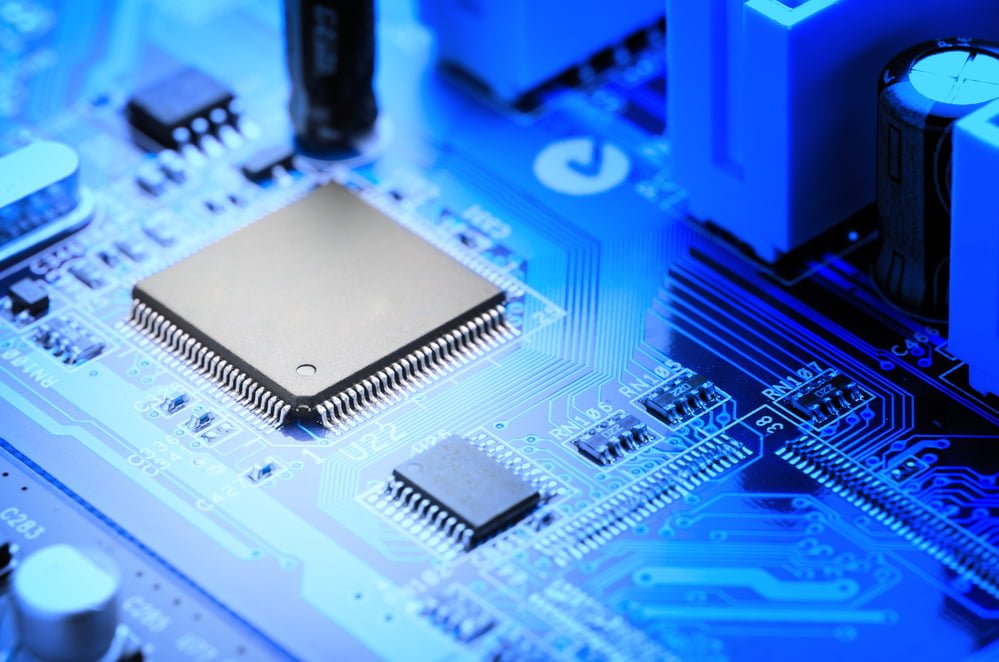The global medical electronics manufacturing market is experiencing rapid growth, the whole market size is expected to reach USD 13.40 Billion by 2028 with a CAGR of 6.8% from 2022 to 2028. One of the main reasons for its growth is the increase in the elderly population who are more susceptible to chronic diseases and have greater demand for medical electronics. According to the report “World Population Ageing Highlights 2020” published by the United Nations Department of Economic and Social Affairs: Over the next three decades, the number of older persons globally is expected to more than double, to exceed 1.5 billion (16%) by 2050. As a result, more and more manufacturers are trying to seize the opportunity and start developing devices for the medical industry, the intense competition among these medical device manufacturers also drives the development of the entire market, more and more new technologies such as 5G technology, IoT, 3D printing are applied to improve the function and performance of medical equipment, and enhance the ability to diagnose and treat patients. At the same time, there are a variety of trends and challenges affecting the medical electronics market, so what is the current situation of this market, and how will it develop in the future? Let’s read on…
Analysis of Current Medical Electronics Manufacturing Market
In this part, we will analyze the status of the current medical electronics manufacturing market from different aspects: regions, applications, FDA Class Designation, and end-users.
Medical Electronics Manufacturing Market in Different Regions
From the perspective of the global market, North America accounts for 45% of the entire market, Europe 30%, Asia Pacific 20%, and other regions account for 5%.
- North America
As we can see from the figure, North America dominates the global medical electronics manufacturing market and will remain in the lead during the forecast period, and the U.S. holds the largest market share in North America. On the one hand, it has a largely increasing geriatric population who are more prone to chronic diseases such as Alzheimer’s Disease and have a large demand for medical devices. According to the report from U.S. Centers for Disease Control and Prevention (CDC), there are about 5.8 million Americans have Alzheimer’s disease which will increase to 14 million by 2060. On the other hand, the United States has the world’s top technologies, which greatly promotes the manufacture and development of related medical electronics and the widespread use of medical electronic equipment.
- Europe
In the European medical electronics market, Germany holds the largest share about 25.6%, followed by France, the United Kingdom, Italy, and Spain, while Poland is believed to a country that will have the fastest growth pace in the forecast period though it only accounts for very little market share and its medical electronics market is not that mature. Currently, most medical devices in Poland are imported from other countries, and it has a growing demand for medical devices especially home care devices as its dramatically increased geriatric population. The European medical electronics market is expected to witness a large growth in the fields such as diagnostics, surgery, cardiovascular, oncology, and so on.
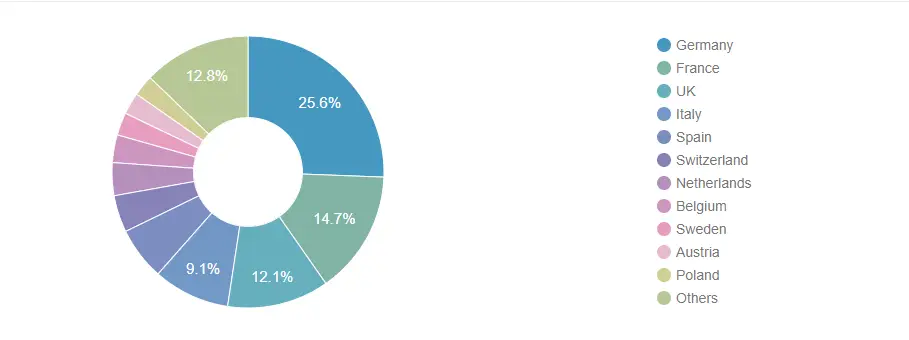
- Asia Pacific
The Asia Pacific is considered to be the fastest-growing region in the global medical electronics market during the forecast period. The main players in this region are China, Japan, India, South Korea, and Australia, and China dominates the Asia Pacific medical electronics market.
The World Health Organization claimed that there are about 80% of the geriatric population in the world will be living in low and middle-income countries by 2050, and the rapidly growing geriatric population in this region is the main reason that drives the boost of demand for medical electronics. Many countries in the Asia Pacific including China and India are attracting foreign direct investment in the medical industry, whose governments also rise the investment to introduce new technologies and develop medical electronics that can also promote the growth of the Asia Pacific medical electronics manufacturing market.
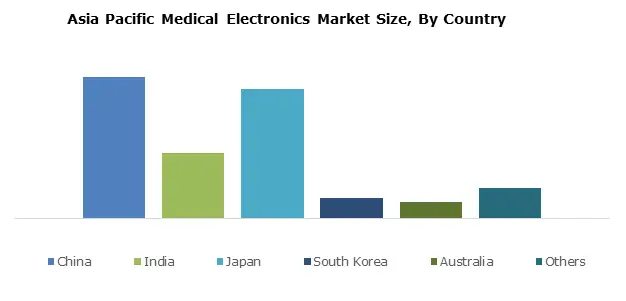 Medical Electronics Manufacturing Market Analysis Based on Different Applications
Medical Electronics Manufacturing Market Analysis Based on Different Applications
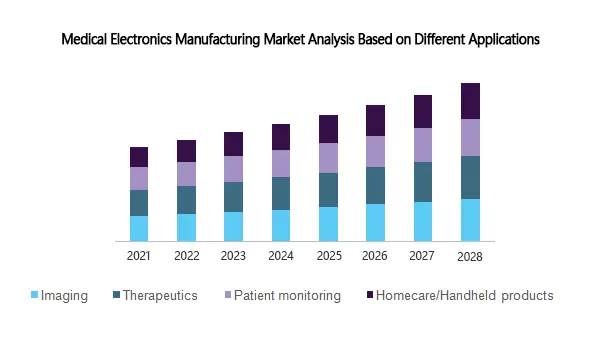
- Imaging Devices Dominates the Market
According to different applications in the medical electronics market, we mainly classify the market into four types: Imaging, therapeutics, patient monitoring, and home care products, and the imaging devices dominate the market and it is expected to be in the lead in the forthcoming years, among them, X-ray equipment and ultrasound equipment account for about 50% of the total imaging market share.
- Home Care/Handheld Products Are Expected to Grow at the Fastest Speed
In recent years, the medical electronics manufacturing market has set off a trend of miniaturization, which has also led to the rapid growth of handheld and home care devices. Compared to expensive and rising hospital costs, devices such as thermometers, blood glucose meters, and handheld ultrasound machines are much more popular in the home care industry as they are feasible, patient-friendly, and more cost-effective. More importantly, these devices bring much convenience for elder people who can get health care at home.
Medical Electronics Manufacturing Market Analysis Based on FDA Class Designation
- Class I Medical Electronics Markets
Class I medical devices refer to gloves, bedpans, and bandages that have high requirements for sanitary and safety. These devices have a very low demand for electronics, which occupy less than one percent of the market, but the potential is relatively large.
- Class II Medical Electronics Markets
Class II devices include surgical needles, suture materials, and x-ray machines, they are a bit more complex than Class I devices. These devices account for about 72% of the medical electronics markets, many electronic components including capacitors, resistors, and inductors are widely used for such devices. And they are expected to keep growing during the forecast period, especially in the medical testing and scanning equipment markets.
- Class III Medical Electronics Markets
The Class III devices occupy about 28% of the medical electronics markets, as such devices are more intricate and harder to get approved by FDA compared to Class I and II device. They are applied to the inside of the human body, such as heart valves, bone implants, and pacemakers. There is a huge market value associated with implantable defibrillators, as these devices require to use electronic components like batteries, capacitors, resistors, and inductors.
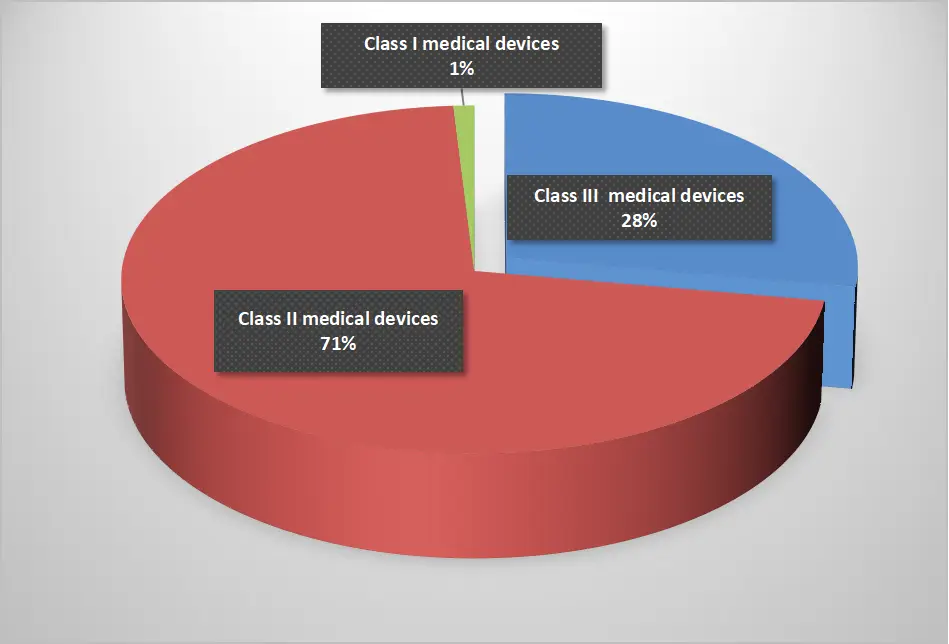
Medical Electronics Manufacturing Market Analysis Based on End-Users
We can divide the medical electronics manufacturing market by different end-users: hospitals, ambulatory surgery centers, home care, and others.
The hospital segment accounts for 53% of the medical electronics market share, and the hospitalizations have increased as the prevalence of cardiovascular disease and respiratory infections in the elderly population. In addition, hospitals covered by public healthcare systems are equipped with advanced medical electronic equipment that will promote the expansion of this market in the forthcoming years.
The ambulatory surgery center segment accounts for 28% of the entire market and is expected to witness rapid growth at a CAGR of 13.1% during the forecast period as there are more and more operations performed at the ambulatory surgery centers. Compared to hospitals, ambulatory surgery centers have a lower cost for treatment thanks to their high operational efficiency. What’s more, they provide professional care and good treatment methods to their patients, which greatly improves the patient’s satisfaction.
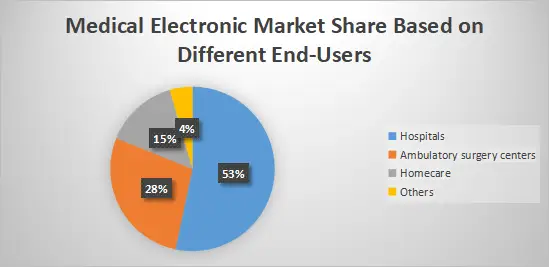
The Trends and Challenges of the Medical Electronics Manufacturing Market

New Trends Drive the Market Development
-
More and More New Technologies Are Applied
- Sensors and Wireless Technologies
Along with the popularity of wearable and non-invasive monitoring devices, sensors and wireless technologies are widely used to achieve the real-time monitoring function. People can easily monitor their health status, for example, wearable devices can monitor our heart rate and temperatures at any time. In addition, these technologies build a bridge between doctors and patients, which allows people to communicate with medical professionals even at home.
- 3D Printing
The 3D printing technology generates the high interest in the medical industry, in 2018, the medical 3D printing market was valued at $973 million and is expected to grow to almost $3.7 billion by 2026.On the one hand, 3D printing can be used to create customized surgery tools with a very short time. On the other hand, we can use it to make molds for dentistry such as crowns and braces, also we can create implants like hip and knee joints, prosthetics, and so on that would aid surgeons in their work and patient recovery significantly. - IoT technologies
IoT technologies such as cloud computing, signal processing, and data analysis have been used in the medical industry for several years, and it is believed that this trend will accelerate during the forecast period. Now, more and more medical devices apply the IoT technologies, especially when COVID-19 is sweeping the world. For instance, health monitoring equipment in the hospital that supports the Internet of Things can prevent patients from becoming infected. And doctors can track patients’ health more effectively even when the patients are not in the hospital, the data collected from IoT devices help doctors to decide the best treatment methods to achieve the desired results. - 5G Technology
5G drives the boost of telemedicine that enables patients in areas with relatively scarce medical resources to receive timely diagnosis and treatment by experts. On the one hand, 5G supports a more stable network that can provide real-time and high-quality video, it can transfer huge data files of medical imagery, which can improve the collaboration efficiency among doctors so patients can get timely healthcare treatment. On the other hand, the use of 5G can also improve AR, VR, and spatial computing to enhance the ability to perform less invasive treatments. There are so many potential applications that 5G can be used in the medical industry, one of the most exciting applications is to simulate complex medical scenarios to figure out the most workable treatment methods for patients.
-
Increasing Demand for Self-Monitoring Devices
Traditional lab tests and diagnostic imaging take much time, for instance, MRIs and CT scans are expensive and time-consuming due to their complex procedure. But for some chronic diseases, which don’t present any symptoms, thus, it’s important for people to monitor their heart rate, sleep quality, and breathing irregularities in daily life. So people tend to use self-monitoring devices such as smartphones and tablets which expand the growth of the mobile applications market as well. These devices provide access for people to get their medical records and even the data of family members to monitor their health status better. And these data play a vital role, once they suggest an abnormality, people can react quickly and seek help from the doctor to avoid more serious problems.
-
Increasing Adoption of Telemedicine
Telemedicine becomes more and more popular in the medical field as it offers many benefits: First, it is cost-effective and time-saving for patients, there is no need for them to go to the hospital, instead, they can get constant care even at home as doctors can monitor patients’ blood glucose levels or blood pressure remotely without physical contact with the patient. In addition, the adoption of telemedicine can relieve the problem of unbalanced medical resources, doctors from different hospitals can use video conferencing tools to discuss the medical treatment methods and decide the best solution for patients.
-
Healthcare Companies Are Turning to External Partners
Partnering with external experts can help healthcare companies to identify market trends better, manage risk, address challenges and provide expertise not available within the company. For example, medical device manufacturers have a better understanding of the fabrication techniques such as CNC and 3D printing to produce more high-quality medical equipment for you. And they know if there would be a materials shortage in the market or what kind of medical devices are more popular, working with them can improve your market competition. So working with external partners is a very important strategy for healthcare companies.
Challenges in the Medical Electronics Manufacturing Market
- Regulatory Challenges
It is a big challenge for healthcare companies to go through the process of certifications and get approval from regulatory departments, which would take a long time especially when it comes to the devices that would be used for the inside of the human body. Thus, most healthcare companies turn to EMS companies that have strong quality programs and can help them to handle kinds of certification work, and some EMS partners can even provide expert guidance about data integrity and software validation. What makes it more tricky is that the regulatory requirements are evolving, making the certification even more complex. For example, they focus more on usability engineering and human factor analysis, they urge environmental compliance and increase the expectations about information security and cybersecurity requirements as well.
- Cybersecurity
Along with the implementation of smart factory technologies, the risk of a cyberattack has also been raised, it is not news that healthcare institutions are being hacked, so cybersecurity becomes a great concern and challenge in the medical industry. To mitigate such risk, we can host Hosting Internet of Things medical devices on separate networks to make sure that the entire facility will not be attacked even if one breached device is hacked. At the same time, we should ensure there are reliable built-in security features for medical devices such as data encryption, the passwords are required to turn on the device and connect with other systems. The company also can offer cybersecurity training for all employees to reduce the potential dangers of network security problems.
- Slowand Expensive R&D
Medical device manufacturing is a slow process that relies on thorough research and development, which requires many clinical trials that is really a time-consuming and expensive process. To promote the development progress, we need to apply advanced technologies such as the cloud and robotic process automation(RPA). By using the could-based collaboration, clinical data from different hospitals and sources can be collected to provide more scientific and comprehensive results. It helps medical device manufacturers to test products based on large sample sizes and can speed up the R&D process by updating data from different sources in real-time. In addition, we can combine robotic process automation with cloud solutions to accelerate the whole R&D progress. RPA enables us to get the trail results faster by automating most processes, so workers can pay more attention to other tasks.
- Counterfeits
As the demand for medical devices is increasingly growing, the medical industry faces another challenge: counterfeits. These counterfeits are harmful to the patients who use them and they would divert revenue from legitimate medical device providers. The solution for this challenge is to implement a system that can verify the authenticity of medical devices. For example, manufacturers can create a unique ID for each product by using blockchain technology, so the recipients can check if they get authentic devices or fake products.
Outsourcing Medical Electronics Manufacturing Services Can Bring Many Benefits
It involves many procedures and resources to develop a new medical device, which also requires expertise and experience in the medical industry. So if there is no professional team in your company, working with reliable medical electronics manufacturers would be a great choice. They provide turnkey services ranging from medical device designing, prototyping, manufacturing, assembly, and testing. Outsourcing a good medical device contract manufacturing partner would allow you to bring new devices to the market with a short turnaround time and save your costs as well, they literally can handle everything involved to develop new medical devices, so you can focus on other aspects of your business.
Key Considerations When Choosing Medical Electronics Manufacturers
- Stable Supply Chain
When choosing medical electronics manufacturers, we need to pay attention to whether they have a stable supply chain and whether they have established solid relationships with suppliers. Because this ensures an uninterrupted supply of high-quality raw materials and relatively favorable prices. What’s more, shortening time-to-market and lowering costs are very important for medical electronics projects, and an unstable supply chain can lead to longer lead times and additional costs.
- Engineering Expertise
Good medical electronics manufacturers have experienced engineering teams who will assess your needs to judge the feasibility of a project before it begins. During the process, if any problems are found, they will provide modification suggestions to ensure the smooth implementation of the project.
- Traceable Manufacturing Processes and Documentation
Complete production records can help us better trace all materials and components used, which is of great significance to all walks of life. For example, it facilitates the rapid recall of faulty products, and in the medical electronic equipment manufacturing industry, these records can be used to verify whether the product meets industry standards.
Top Medical Electronics Manufacturers in the World
- Foxconn
Foxconn is the top player in this list of medical electronics manufacturers in the world. It entered the medical electronic equipment market in 2014 and achieved a revenue of US$193.72 billion in 2020. Today, the company owns a biotech company that makes cancer detection technology and a company that makes laboratory equipment technology.
- Wistron
The company is headquartered in Taiwan, and although its business focus is on the consumer electronics industry, the Wistron Medical Technology Corp subsidiary it founded occupies a large portion of the medical electronics market, offering one-stop services covering design, manufacturing, and handling supply chain logistics for medical devices.
- Jabil
Jabil is headquartered in Florida, and the medical device industry is the company’s focus and one of its main sources of income. In 2013, they acquired Nypro and changed its name to Jabil Healthcare, which mainly provides services for various medical equipment such as diagnostic tests. The company has strong R&D strength and medical equipment production technology and is a global leader in medical electronic equipment manufacturers.
- Flex
Flex is a Singapore-based company, formerly known as Flextronics International, which serves a wide range of clients ranging from healthcare to the automotive industry to the communications industry. Flex, whose main business is the design and mass manufacturing of medical devices, worked with Jabil to increase the production of ventilators to meet the needs of Covid-19 patients when the outbreak hit in early 2020.
- MOKO Technology
Established in 2006, MOKO has been providing medical electronics manufacturing services to clients around the world for about 16 years. They provide full-scale services covering prototyping, manufacturing, and testing, all products from MOKO are regulated by FDA. Certificated with ISO9001 and ISO13485, medical devices offered by MOKO are first-tier and trusted by leading healthcare companies.
- Sanmina
Founded in Silicon Valley in 1980, Sanmina employs about 35,000 people worldwide. The company is well-known in the medical device industry, producing equipment such as surgical robots, MRI machines, and X-ray technology. In addition, the company has created optical biosensors that can diagnose disease, which is expected to be used in invasive procedures in the future.
- Celestica
It has more than 70 years of experience in electronic manufacturing services, headquartered in Toronto, Canada, with offices in Asia and Europe, providing high-reliability design, manufacturing, and supply chain solutions to global customers. For medical electronic equipment, it worked with StarFish Medical to expand the production scale of ventilators. In addition, the company is also focused on developing technologies for disease prevention.
- Plexus
Plexus provides components and participates in the design and manufacture of products for various industries, primarily the global communications, medical, security, and aerospace industries. This company offers a wide variety of medical electronic devices such as laboratory workflow automation, surgical robotics, tissue diagnostic equipment, and so on.
MOKO Brings Your Medical Devices to Market That Improve the Quality of Lives
MOKO Technology is committed to leveraging our extensive experience, expertise, and capabilities to help our customers bring life-enhancing medical devices to market. Since 2006, we have provided a wide range of services for medical devices including engineering, prototyping, electronics manufacturing, assembly, and testing. MOKO’s medical devices play an important role in many fields, from prevention, diagnosis, and treatment to home and community healthcare.
Our commitment to quality ensures that all of our products are of the highest quality and reliability, we have passed ISO13485 and ISO9001 certification, double certification is the guarantee of quality. And all products we assemble meet the stringent standards of the medical industry and are classified as FDA Class II. In addition, our services are responsive and we are very agile to the market, so we can help our clients reduce time-to-market.
We understand the importance of these devices to patients, and together with you, we will take responsibility for bringing more and more medical devices to market and improving people’s quality of life.

